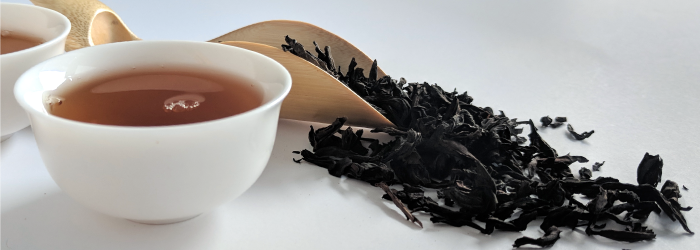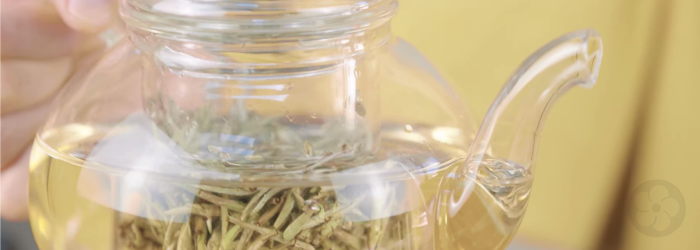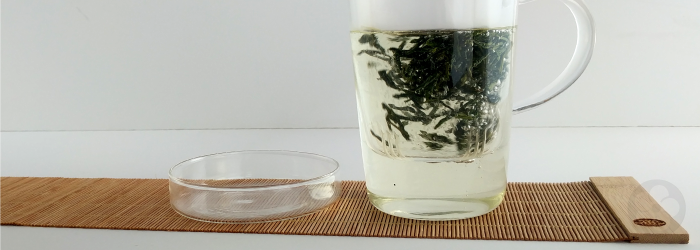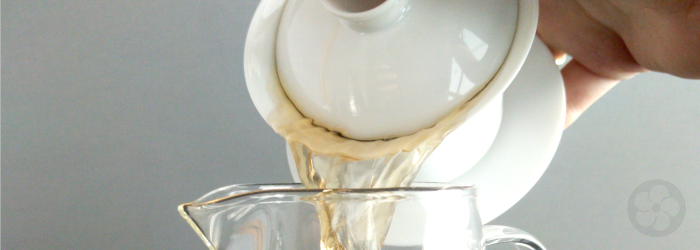How to Make Tea: The Ultimate Guide to Brewing Loose Leaves

Check out our guide to serving sizes, temperature, and time >>
To make things more difficult, cultures worldwide have developed their own rules for the ‘proper’ way to make tea, which often correspond to their own favorite styles and flavors, and commonly conflict with each other.
While the ways in which tea can be prepared are almost too numerous to count, we’re breaking down six of the most popular methods in the modern world in this blog post. We’ll cover the equipment you need and which types of tea are best suited for each method, so you can get started on clearing out the stash of loose leaf teas in your cupboard.
1. Tea Bags
Tea bags are the most common way to brew tea in the modern world, though they are often derided by serious tea drinkers. Because they can be sealed in single serving packages and provide a very fine filter, they are easy to pack, ship, and brew without any extra equipment. They are now so ubiquitous that many tea drinkers think of this as the primary form of tea!
Find out more about quality in tea bags >>
However, tea bags made for the mass market rarely live up to the flavor quality of single-origin leaves. For consistent flavor, large companies purchase high-yield summer harvests and blend many batches together. The fine filter allows for the use of broken leaves or even tea dust, called ‘fannings’, left over after the production of whole leaf teas. These small pieces of leaf release bitterness and astringency more quickly.
All these caveats can give tea bags a bad name, but that doesn’t make them any less useful. Empty tea bags, which can be sealed like an old-school sandwich bag to keep leaves contained, are simple to fill yourself with any tea. Watch a demonstration of how we use these bags for finely shredded herbal teas:
2. Infusers
In a way, tea bags are a variant of an infuser basket, made with cotton instead of the common metal mesh. Infusers come in many shapes and sizes, including clamping tea balls, novelty strainers, travel thermoses, and larger baskets meant to sit in the top of a pot or cup.
Tea Balls
Small clamping tea balls, originally used as ‘spice balls’ in Europe, are common among drinkers of British black teas. They work well for the chopped leaves of most breakfast blends, but their small size will restrict the expansion of whole leaf teas, thereby over-brewing the outer layer of tea leaves while under-brewing the interior, and ultimately sacrificing flavor.
Any infuser can produce the same issue when over-stuffed, which is why our favorites are large, deep baskets that allow plenty of room for water to flow through the leaves. In fact, when brewing tea in our travel thermos, we often put the leaves outside the basket, giving them plenty of space to float and expand, while also using the strainer to keep them out of our mouth.
Infuser Baskets
For a stationary pot or mug, a large basket that will sit atop a mug or teapot is preferable, for maximum space. This is a supremely versatile method for almost any tea, regardless of leaf size. When brewing a variety of different teas in the same vessel, we always like to invest in a flavor-neutral material like heat-resistant glass, that won’t spoil a delicate green tea after holding a strong tea like spiced Chai.
Some teapots, especially those made in China and Japan, include a straining filter built into the inside, or at the base of the spout. These teapots are, essentially, a single-piece infuser, in which the tea leaves can float freely before the liquid is poured from the straining spout. Japanese versions often have a finer filter to suit the broken leaves of popular locally grown green teas.
3. Steep & Decant
In tea cultures that use whole leaves, teapots with strainers or other vessels are usually decanted fully after a short steeping time, and then filled again with water to produce multiple infusions. This technique is the basis for the gong fu cha method that we use for tasting and testing quality, but can also be simplified for an easy everyday brewing method that really makes the most of whole leaf teas.
Small Tea Pots & Gaiwans
For those who truly love tea, specialized teaware in a smaller size can be a worthwhile investment. Brewing in smaller quantities is a bit like brewing an espresso instead of a large pot of coffee: the result is a more concentrated flavor that can be consumed in full while fresh. The advantage in tea, however, is that the same leaves can produce more than one infusion. Watch a demonstration of how we use small teaware for gong fu cha:
Traditional teaware, like gaiwans or small teapots, are designed for maximum control over the brewing process. The wide mouth and white background of a porcelain gaiwan makes it easy to see when tea leaves have rehydrated, while the dense stoneware of Yixing is perfect for retaining heat and producing a precise pour. The high degree of control is indispensable for maximizing the flavor potential of any tea.
Learn which type of teaware pairs perfectly with your favorite tea >>
Simplified Methods
But a long brewing session is not required to get the most out of high quality teas. Use a small teapot or gaiwan to do multiple infusions in a row, stacking them into a large mug or travel thermos. With this method, it is easy to make a large volume at once without sacrificing control over the flavor.
Even without any specialized tools, the simple steps of brewing and pouring are easy to perform. Use a spoon or small plate to hold leaves back (like straining pasta) while pouring off tea from an extra mug in the office kitchen. Or brew tea while traveling with two paper cups and a travel lid from a coffee shop: add tea leaves to hot water, then pour through the small hole in the lid to strain the liquid away from the leaves. No matter what tools you use, limiting the steeping time will keep most whole leaf teas from becoming bitter or astringent.
4. ‘Grandpa Style’
With most high quality teas, the process can be even simpler. When leaves struggle to grow, the plant sends glucose from the roots to the growing buds, resulting in natural sweetness, and the leaf has more time to develop complex flavor compounds. Teas picked in early spring are highly valued for their natural sweetness, and many tea styles are famous for their high-elevation terroir, where colder temperatures and cloud cover slow growth rates.
These premium leaves, which lack the bitterness and astringency present in more common teas, can be left in hot water almost indefinitely without producing the sharp bite associated with over-brewing. Many tea drinkers simply drop a small serving of loose leaves into a cup or tea bowl, let them steep until they sink to the bottom, and then sip the brewed tea from the top. More water can be added to freshen the brew until the flavor is spent. Watch us demonstrate how we do a ‘grandpa style’ brew in a tea bowl:
This method is commonly called ‘grandpa style’ thanks to a prevalence among older Chinese tea drinkers, but is certainly approachable for anyone. For a more forgiving brew, try adding water that is below boiling temperature, and brewing in a bowl with a wide opening that will allow heat to escape more quickly.
Learn how to balance time and temperature for the perfect brew >>
5. Cold Brew
For the most forgiving brew, perform a slow flavor extraction by steeping in cold water to make iced tea. Simply place dry leaves in a large pitcher (use our pre-packaged iced tea bags for easy portioning), top with cold water, and steep in the fridge 5-8 hours or overnight. Similar to cold brewed coffee, the resulting iced tea will have all of the flavor complexity, with no bitterness or astringency.
This method is also our final test when checking the quality of any tea, as tasting without heat can reveal whole new aspects of any tea. Watch us demonstrate this method with our all-inclusive Cold Brew Kit:
6. Kombucha
Want to try something totally different? For a fizzy, naturally sweet beverage chock full of probiotics, brew a big batch of kombucha! This fermented beverage is easy to make, a great way to use up a big stash of tea, and a perfect healthy substitute for soda. Brew up a big batch of tea with honey, and then let a SCOBY consume the sugars to create carbonation and a distinctive tart flavor. Your kombucha can be ready to drink in as little as 3-4 days, though longer fermentation will result in more tartness.
Check out our step-by-step guide to making all-natural kombucha >>
How do you brew tea? Did we miss any methods? Let us know your favorite technique in the comments below!
Sign up for our newsletter to get blog updates in your inbox!







Comments on this post (1)
Thanks for sharing this info with us.
— Pure Online Store